Cephalanthus occidentalis
(Buttonbush)
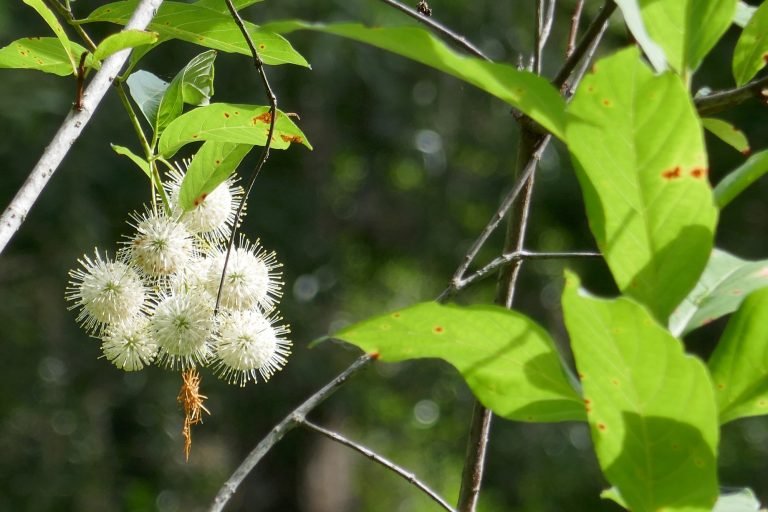
Common Names, Latin Name and Family
Its common names include buttonbush, common buttonbush, button willow, honey-bells, honeyballs, and riverbush.
Its Latin name is Cephalanthus occidentalis.
It is found in the Rubiaceae, or madder, family.
Form
Buttonbush is a deciduous shrub that grows to 12 feet in height.
Leaves
Buttonbush leaves are opposite, ovate to elliptic in shape with entire margins.
The stems of young growth are usually red.
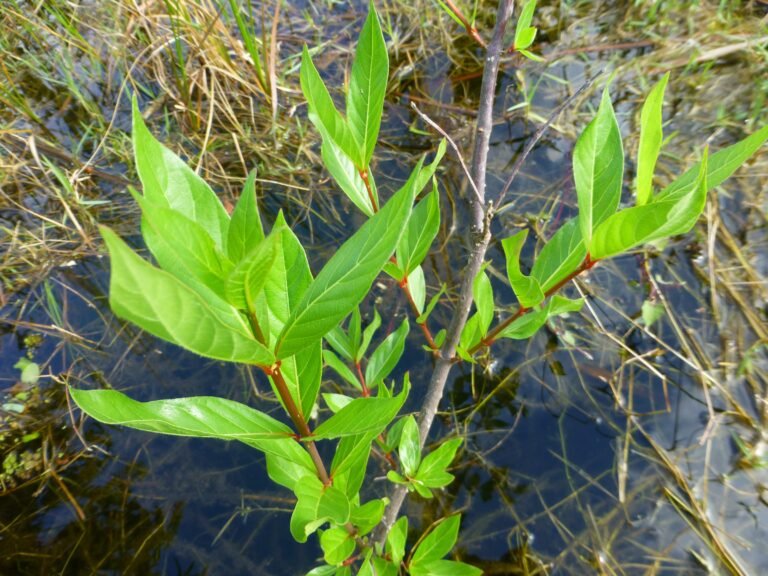
Flowers
The white, globe shaped, flowers appear in the spring and summer.
The flowers are very fragrant.
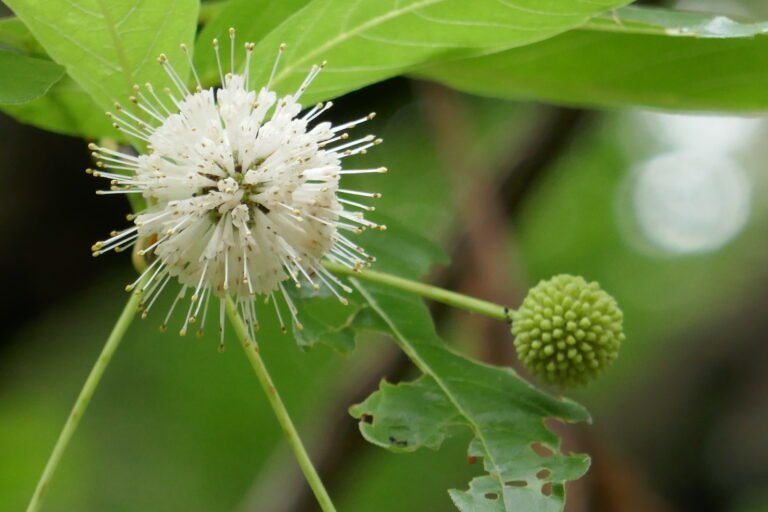
Fruit / Seeds
Once the flowers are pollinated the seeds begin to mature and form a large seed ball that looks similar to a sycamore tree seed pod.
The round pod contains many individual seeds.
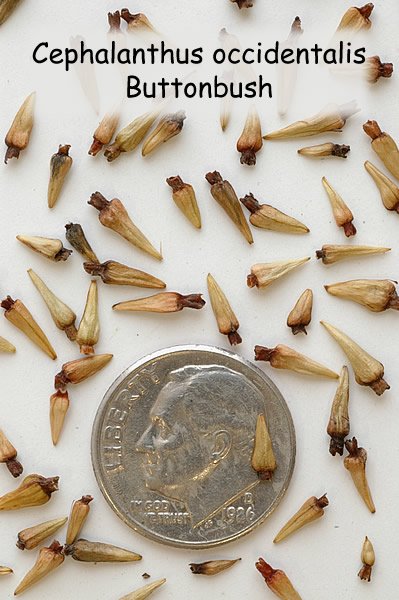
Habitat
Buttonbush occurs naturally in marshes, swamps, pond margins, cypress heads, lake banks, river banks, and wet ditches.
Native Range
It occurs naturally in the entire state of Florida and ranges from Florida to Mexico and north to Canada.
Landscape Use
It grows in part shade to full sun with moist to wet soils. Buttonbush needs moist to wet soils and will not survive in dry soil.
Buttonbush is best used along shorelines and swampy areas with full sun.
It can tolerate water up to three feet deep.
It doesn’t flower well in shade or in dry soils.
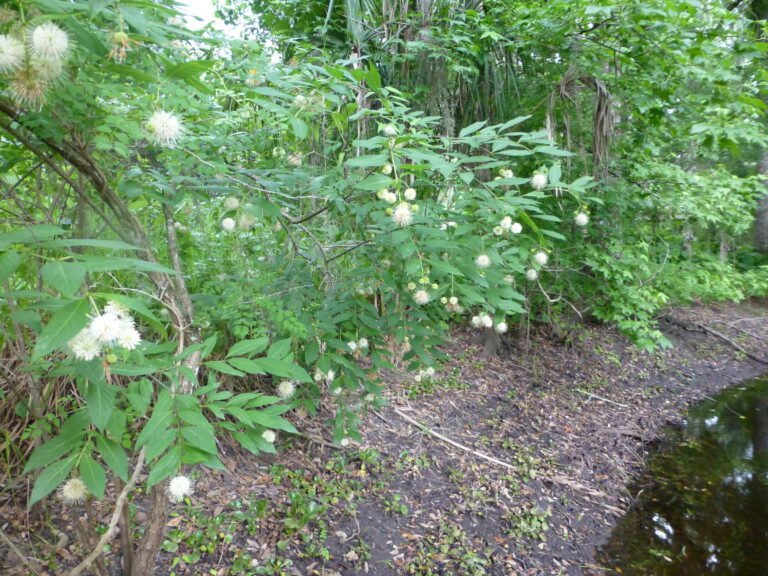
Wildlife Use
Bees, butterflies, wasps, and flies use the flowers as a nectar source.
Songbirds and waterfowl eat the seeds.
The foliage provides excellent foraging and nesting sites for birds.
The foliage and young twigs are eaten by a variety of different mammals including deer, muskrat, and other small mammals.
Buttonbush is a host plant for the sphinx moth
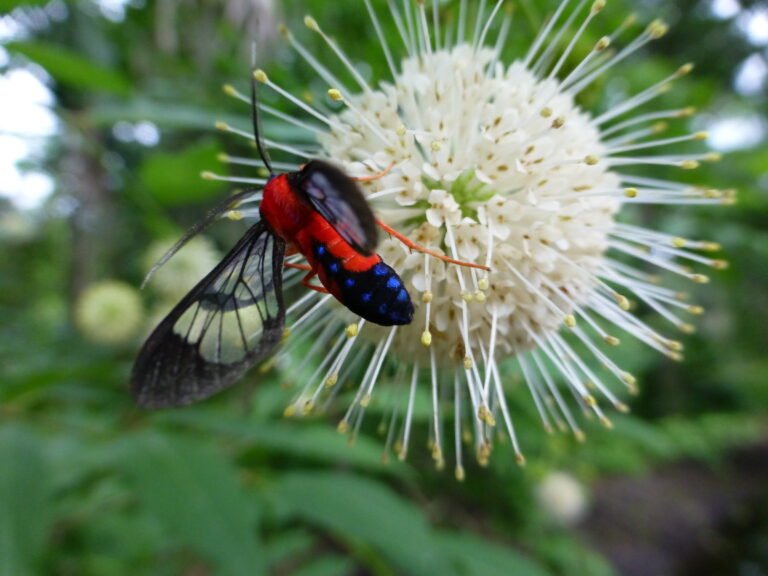
Propagation
It can be grown from seed but they must be extremely fresh. The seeds do not store well and become less viable the longer they are stored.
Getting root cuttings, or suckers, is the easiest method of propagation. Dig around the base of the plant to find pieces that have root attached and can be moved. Be sure to cut back and remove flowers and seed pods so the plant can recover more quickly.
